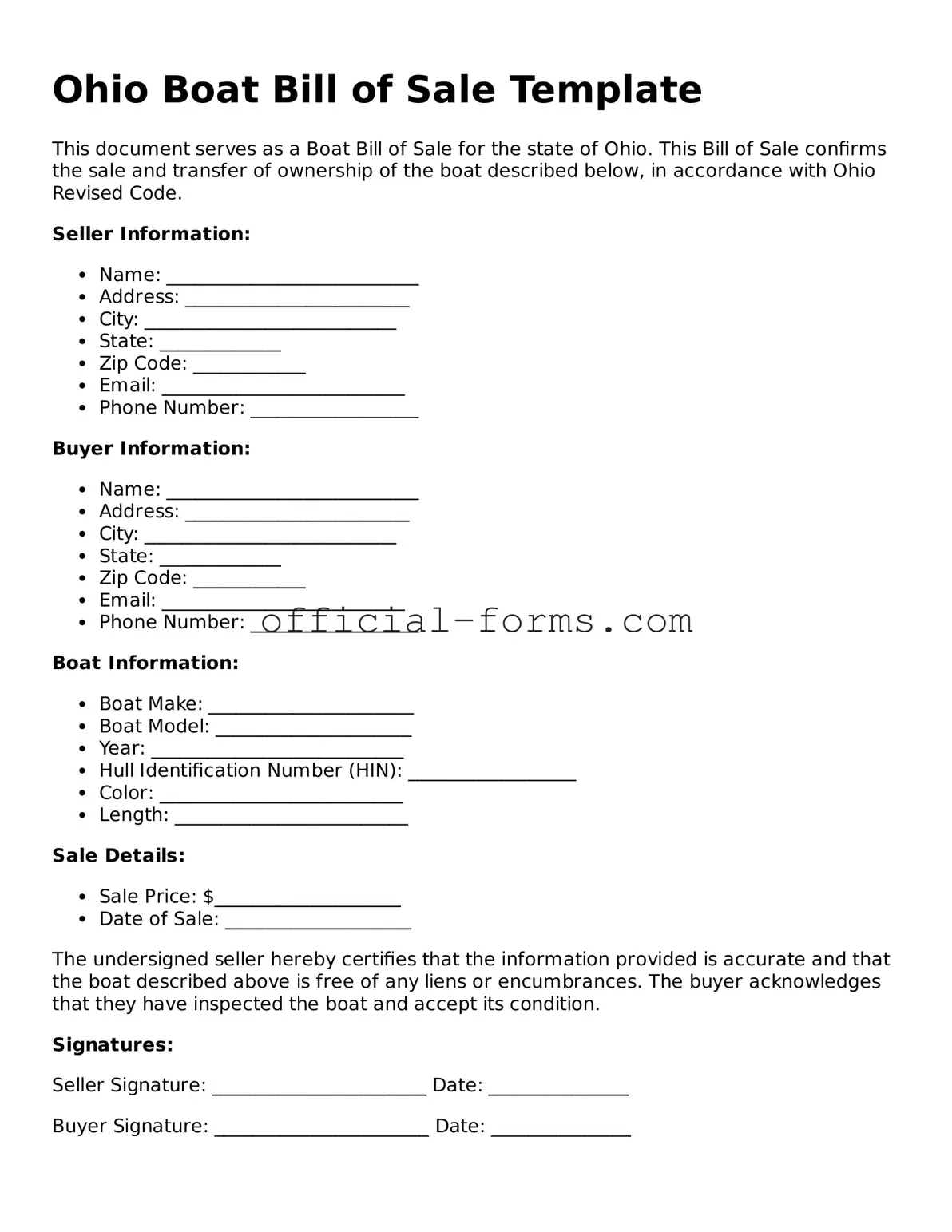When filling out the Ohio Boat Bill of Sale form, many individuals make common mistakes that can lead to complications down the line. One prevalent error is failing to provide accurate information about the boat. Details such as the hull identification number (HIN), make, model, and year are crucial. Omitting or misrepresenting this information can create issues during registration or when transferring ownership.
Another mistake is neglecting to include the names and addresses of both the buyer and the seller. This information is essential for establishing a clear record of the transaction. Without it, future disputes regarding ownership may arise, complicating what should be a straightforward process.
Many people also overlook the importance of including the sale price. While it may seem trivial, this figure serves as a reference for tax purposes and can affect the buyer’s registration fees. Failing to state the price can lead to misunderstandings and potential legal challenges later on.
Signatures are another critical component of the form. Both parties must sign the document to validate the sale. Sometimes, sellers forget to sign, or they may not have the buyer present to sign at the time of the transaction. This oversight can render the bill of sale ineffective.
In addition to signatures, the date of the transaction must be clearly indicated. Without a date, the document lacks context, which can be problematic if disputes arise regarding when the sale occurred. It’s important to ensure that this detail is not overlooked.
People often fail to keep a copy of the completed bill of sale. Retaining a copy is essential for both the buyer and seller. It serves as proof of the transaction and can be invaluable if questions about ownership or the sale arise in the future.
Finally, some individuals may not understand the implications of not notarizing the document. While notarization is not always required for a bill of sale, having it notarized can add an extra layer of legitimacy. It can serve as evidence that both parties willingly entered into the agreement, which can be beneficial if disputes arise.
